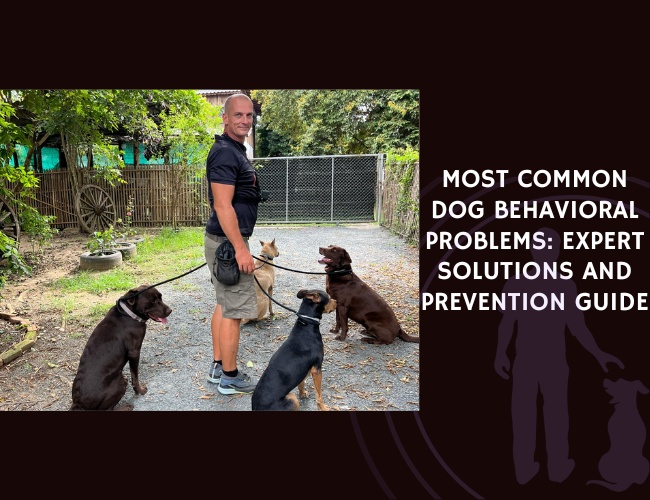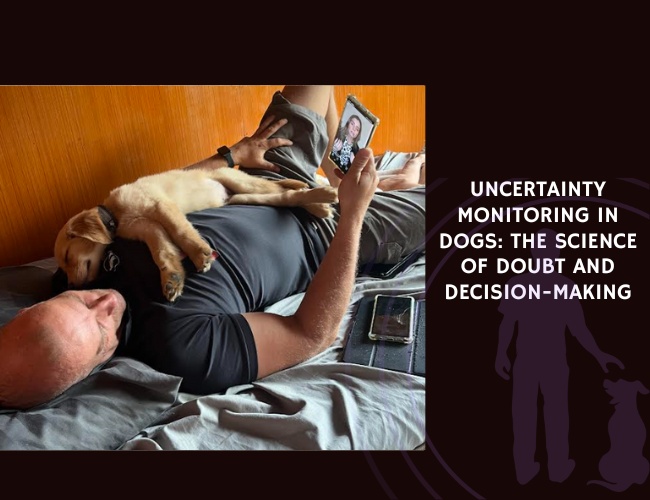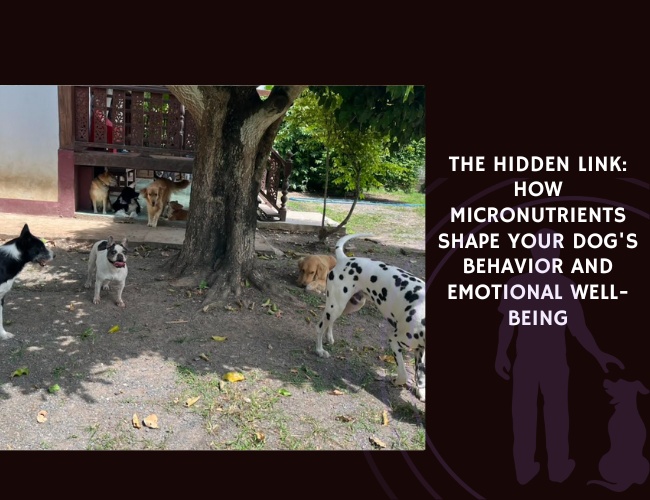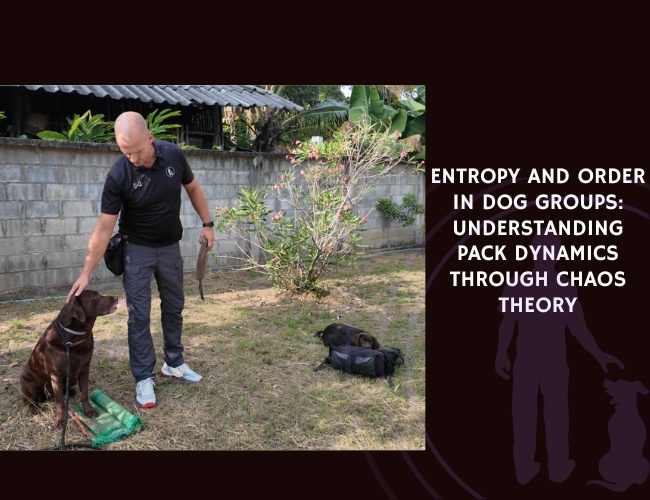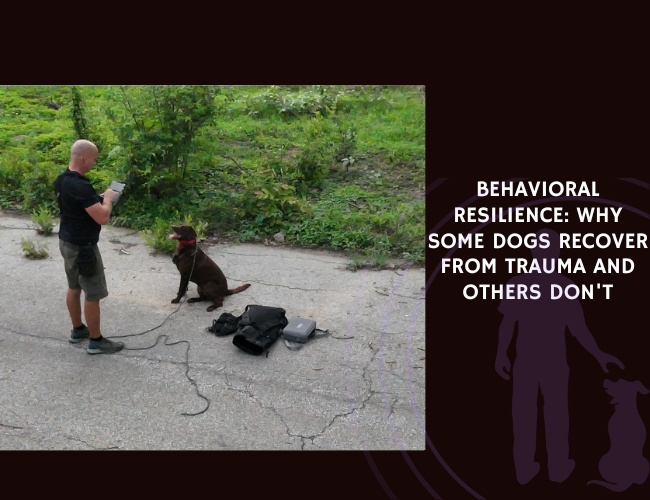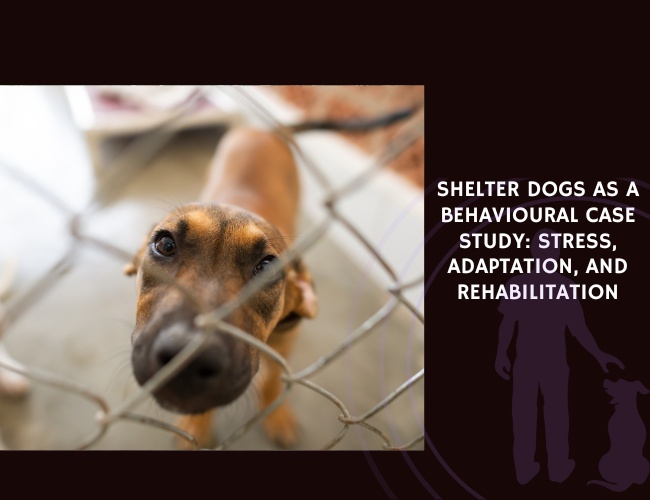Introduction to Dog Behavioral Problems
Overview of the Prevalence of Behavioral Issues in Dogs
Behavioral issues in dogs are more common than many people realize. Studies show that up to 90% of dogs exhibit some form of behavioral problem at different points in their lives. Issues range from mild, such as excessive barking, to severe, like aggression towards humans or other animals. These challenges can affect dogs of all ages, breeds, and backgrounds, making it essential for dog owners to be aware and proactive in addressing them.
Importance of Early Identification and Intervention
Recognizing behavioral issues early is critical for effective intervention. Many behavioral problems, like fear-based aggression or separation anxiety, can worsen over time if not addressed promptly. Early identification allows for timely intervention, which can prevent the escalation of issues and make management easier. It also helps in reducing long-term stress and anxiety for both dogs and their owners.
Acting quickly provides the chance to use positive reinforcement techniques to modify behavior before it becomes entrenched. For example, a puppy showing early signs of resource guarding can be trained to trust that their resources are safe. Quick intervention not only improves the animal’s well-being but also strengthens the bond between the dog and their owner.
Impact on Both Dogs and Their Owners
Behavioral problems significantly impact both dogs and their owners. For dogs, these issues can lead to constant stress, anxiety, and even physical health problems. Chronic stress from behavioral problems can weaken a dog’s immune system, making them more susceptible to illness. Furthermore, dogs displaying severe behavioral issues may face isolation or, in the worst cases, relinquishment to shelters.
For owners, a dog with behavioral problems can lead to frustration, guilt, and strain within the household. Managing a dog with severe behavioral issues requires time, resources, and emotional resilience. This can disrupt the harmony within the family and also strain relationships.
Recognizing the signs early and seeking appropriate intervention can lead to a happier and healthier life for both the dog and the owner. Investing time in understanding and addressing the root causes of these behaviors is crucial for fostering a supportive and positive environment where both the pet and the family can thrive. This understanding lays the groundwork for exploring specific behavioral problems and their solutions, ensuring a well-rounded approach to canine well-being.
Separation Anxiety
Signs and Symptoms of Separation Anxiety
Separation anxiety in dogs often manifests through various signs and symptoms. Common indicators include excessive barking or howling, particularly when you’re not home. Your dog might also engage in destructive behaviors like chewing furniture or digging at doors and windows in an attempt to escape. House soiling, even in previously house-trained dogs, is another red flag. Additionally, you might notice changes in your dog’s behavior such as restlessness, pacing, and drooling when they sense that you’re about to leave.
Understanding the Root Causes
The underlying causes of separation anxiety can vary. Some dogs may develop this condition due to a traumatic event involving being left alone, such as a change in routine or environment. Rescue dogs, for example, might be especially prone to anxiety due to their past experiences. Inconsistent schedules and lack of proper socialization can also contribute to the development of separation anxiety. Understanding these root causes is crucial for effectively addressing the issue.
Effective Management Strategies Using Positive Reinforcement
Managing separation anxiety effectively requires a combination of techniques, with positive reinforcement being key. Start by gradually acclimating your dog to being alone. Practice leaving them for short periods and gradually extend the duration. Make departures low-key and uneventful to avoid heightening their anxiety.
Interactive toys and puzzles can keep your dog occupied while you are away. These not only divert their attention but also provide mental stimulation. Additionally, consider incorporating puzzle feeders or kong toys stuffed with treats as they can significantly mitigate anxiety by keeping your dog engaged.
Positive reinforcement plays a pivotal role in training. Reward your dog for calm behavior both during and after separations. Treats, praise, and affection reinforce positive experiences associated with alone time. Consistent practice and patience are essential. Remember to also create a comfortable and safe space for your dog with their bed and favorite toys.
Recognizing and addressing separation anxiety early can prevent it from escalating into more severe behavioral issues. Having a proactive approach ensures that both you and your dog can enjoy a stress-free, harmonious life together. With consistent efforts and positive reinforcement, managing separation anxiety becomes significantly more achievable, paving the way for a stronger bond between you and your furry friend.

Aggression in Dogs
Aggression in dogs, as well as most behavioral issues, often stems from their personal experiences—or in some cases, the lack thereof. From my experience as a professional dog trainer, I’ve observed that behavioral issues are typically not inherent traits but rather reactions influenced by what a dog has encountered in its environment. This perspective shifts the focus from simply suppressing problematic behaviors to understanding their root cause.
Take excessive barking as an example. Often, this behavior is not due to stubbornness or disobedience but can be a side effect of inexperience. A dog that has never encountered a particular type of threat, such as an unfamiliar person or a new animal, may react with persistent barking simply because it doesn’t know how else to respond. Without prior exposure or proper guidance, the dog’s reaction is based on uncertainty and instinct rather than learned behavior.
This principle applies to many behavioral problems, whether it’s fear-based aggression, territorial behavior, or social anxiety. Dogs process their world through a combination of past experiences and learned coping mechanisms. Therefore, the solution lies not in punishment but in carefully introducing controlled experiences that help the dog develop appropriate responses.
Different Types of Aggression
Aggression in dogs can manifest in various forms, each with its unique triggers and responses:
- Fear-Based Aggression: Dogs exhibiting this type of aggression often react defensively. They perceive a threat and respond by attempting to scare it away. Common signs include growling, barking, and snapping.
- Territorial Aggression: This typology occurs when a dog feels the need to protect its territory from intruders. It is often seen when a stranger approaches the home or yard. Warning signs include barking, lunging, and biting.
- Resource Guarding: Dogs display this form of aggression when they feel the need to protect their valuable resources, such as food, toys, or even people. Look out for growling, snapping, or biting if someone or another pet gets too close to their prized possessions.
Identifying Triggers and Warning Signs
Recognizing the early warning signs of aggression can help prevent escalation:
- Body Language: Tensed body, growling, baring teeth, snapping, or a stiff tail are initial indicators of aggression.
- Specific Situations: Noting the context in which aggression arises is crucial. Is it when strangers visit, during mealtime, or when the dog is confronted in a small space?
- Behavioral Patterns: Keeping a log of aggressive instances can help identify and anticipate triggers. This diary can be invaluable for a professional trainer or veterinarian.
Professional Intervention and Training Approaches
Managing aggression often requires professional help. Here’s how intervention and training can make a difference:
- Behavioral Consultation: Consulting a certified dog behaviorist can provide insights into the underlying causes of aggression. Professionals can create a tailored intervention plan.
- Training Techniques: Positive reinforcement is crucial. Rewarding calm behavior consistently can help modify aggressive tendencies. Tools like leashes, harnesses, and muzzles, combined with training, keep situations safe and controlled.
- Desensitization and Counter-Conditioning: Gradual exposure to triggers in a controlled manner, paired with positive experiences, helps reduce the dog’s fear and aggressive reactions.
Effectively addressing aggression in dogs involves understanding the specific type of aggression, recognizing triggers and warning signs, and seeking professional intervention. By doing so, you can create a safer and more harmonious environment for everyone involved.
Next, let’s explore another common behavioral issue in dogs and discuss various tips and strategies to manage it effectively.

Excessive Barking
Common Causes of Excessive Vocalization
Excessive barking can be quite challenging for any dog owner. Understanding the root causes is the first step in addressing the issue effectively. Here are some common reasons why dogs bark excessively:
- Boredom: Dogs may bark when they feel unstimulated or left alone for extended periods. Without mental or physical activities to keep them occupied, barking can become a way to pass the time.
- Fear or Anxiety: Sudden noises, new experiences, or unfamiliar people can trigger bark responses out of fear or anxiety.
- Territorial Behavior: Dogs often bark to alert their owners of perceived intrusions. This could include other animals, people approaching their territory, or even passing cars.
- Medical Issues: Sometimes, health problems like pain or discomfort may cause a dog to bark more frequently.
Behavior Modification Techniques
Implementing effective behavior modification techniques can help manage and reduce excessive barking. Here are some strategies you can try:
- Positive Reinforcement: Reward your dog for being quiet with treats, play, or affection. This reinforces the behavior you want to see.
- Ignore Unwanted Barking: If your dog barks for attention, avoid responding. By not giving in, you teach your pet that barking won’t result in the desired outcome.
- Desensitization: Gradually expose your dog to the triggers causing their barking. Start with low-intensity exposure and increase it slowly, pairing the exposure with positive experiences.
Environmental Management Strategies
Creating an environment that minimizes triggers can have a significant impact on reducing excessive barking. Consider these approaches:
- Adequate Exercise: Ensure your dog gets plenty of physical activity. Tired dogs are less likely to bark out of boredom or pent-up energy.
- Mental Stimulation: Provide puzzle toys, interactive games, and opportunities for problem-solving. Mental challenges can help keep your dog’s brain busy and reduce boredom.
- Safe Space: Create a calm area where your dog can retreat and feel secure. This space can help reduce anxiety-induced barking.
- White Noise or Music: Background noise can help mask sounds that might otherwise trigger barking. Try using a white noise machine or leaving on calming music to create a more soothing environment.
Addressing excessive barking involves a combination of understanding the underlying causes, modifying behavior with training techniques, and managing the dog’s environment to reduce triggers. By taking these steps, you can improve the well-being of both your dog and your household, ensuring a more harmonious living situation for everyone involved.
Destructive Behavior
Destructive behaviors in dogs can be a significant source of frustration for owners. Understanding the reasons behind these actions is the first step toward resolving them.
Why Dogs Engage in Destructive Behaviors
Destructive actions, like chewing furniture or digging holes, are often expressions of underlying issues. Some common reasons include:
- Boredom: Dogs need mental and physical stimulation. Without it, they may find their own creative ways to entertain themselves.
- Anxiety and Stress: Separation anxiety, loud noises, or environmental changes can lead dogs to act out destructively.
- Teething: Puppies explore the world with their mouths, which can lead to chewing as they relieve discomfort from incoming teeth.
Prevention Strategies and Environmental Enrichment
Preventing destructive behaviors involves keeping your dog engaged and secure. Here are some effective methods:
- Provide Ample Exercise: Regular walks, playtime, and training sessions help expend your dog’s energy.
- Mental Stimulation: Puzzle toys, treat-dispensing gadgets, and interactive games keep your dog’s mind active.
- Safe Chews and Toys: Offering appropriate chew toys helps satisfy the natural urge to chew.
- Crate Training: A crate can provide a safe haven for your dog, preventing access to items they shouldn’t chew on.
Training Methods to Redirect Destructive Tendencies
Redirecting destructive behavior involves teaching your dog what is and isn’t acceptable. Consistency and positive reinforcement are key.
- Teach “Leave It” and “Drop It”: These commands help redirect your dog’s attention away from inappropriate objects.
- Reward Good Behavior: Praise and treats can reinforce the positive behavior you want to see.
- Supervision and Management: Closely supervise your dog, especially during the training phase, to quickly redirect unwanted actions.
Destructive behavior can be managed with patience and consistency, along with understanding the underlying causes.
Moreover, equipping your dog with the ability to cope with their environment helps build a happier, well-adjusted companion.

Fear and Anxiety Issues
Common Phobias and Anxiety Triggers in Dogs
Fear and anxiety can manifest in various ways in dogs, often stemming from specific phobias or triggers. Common anxiety triggers include:
- Loud noises: Thunderstorms, fireworks, loud construction noises, or household appliances can elicit fear responses.
- Social situations: Meeting unfamiliar people or animals, particularly if the dog has not been properly socialized.
- Environmental changes: Moving to a new home, changes in the family structure, or even rearranging furniture can trigger anxiety.
- Separation: Dogs may become anxious when their owners leave, leading to behaviors like destructive chewing, excessive barking, or house soiling. This overlaps with separation anxiety discussed earlier.
Recognizing these triggers helps owners create targeted strategies to alleviate their dog’s anxiety.
Desensitization and Counter-Conditioning Techniques
Two effective techniques to manage fear and anxiety issues in dogs are desensitization and counter-conditioning.
Desensitization
This involves gradually exposing dogs to the anxiety-inducing stimulus at a low, non-threatening level. Over time, the dog becomes less sensitive to the trigger. For example, if your dog is afraid of thunderstorms, you can start by playing recordings of thunder quietly while the dog is calm and relaxed. Gradually increase the volume over several sessions, ensuring the dog remains comfortable at each step.
Counter-Conditioning
Counter-conditioning aims to change the dog’s emotional response to a trigger by associating it with something positive. For instance, if your dog is afraid of strangers, you can have a friend (whom your dog doesn’t know) toss treats from a distance. The dog begins to associate strangers with the positive experience of getting treats, reducing their anxiety over time.
Combining these techniques can help progressively ease a dog’s fear and anxiety, fostering a more relaxed and confident demeanor.
When to Seek Professional Help
While many anxiety issues can be managed with patience and consistent training, some cases may necessitate professional intervention. Seek help if:
- The dog’s anxiety is severe or worsening, affecting their quality of life.
- Training and behavior modification techniques are not showing improvement.
- Your dog’s behavior poses a risk to themselves or others.
Professional trainers and veterinary behaviorists can offer specialized training programs and, in some cases, medication to help manage severe anxiety.
By recognizing common anxiety triggers, implementing desensitization and counter-conditioning techniques, and knowing when to seek professional help, you can support your dog in overcoming their fears. Understanding and addressing these issues leads to a more harmonious relationship between you and your furry friend.
Leash Pulling and Walking Problems
Basic Leash Training Principles
Walking your dog should be an enjoyable activity, but for many owners, it can turn into a struggle if their dog constantly pulls on the leash. Understanding and mastering basic leash training principles can make a world of difference.
Start by choosing a suitable leash and collar. A standard 6-foot leash and a properly fitted collar or harness work best. Avoid retractable leashes as they encourage pulling by giving the dog more freedom to wander.
Begin training in a distraction-free environment. Hold the leash in your left hand and treats in your right. As you walk, keep the leash slack. If your dog pulls, stop walking and wait. When the leash relaxes, reward them with a treat and praise. Repeat this process consistently so your dog learns that walking nicely results in rewards.
Positive Reinforcement Techniques for Better Walking Behavior
Positive reinforcement plays a crucial role in improving leash-walking behavior. Dogs respond well to rewards, making training a more pleasant and effective experience.
Reward your dog for walking beside you calmly. Use high-value treats, a pleasant tone, and plenty of praise. Timing is critical; reward your dog immediately when they exhibit the desired behavior. Gradually increase the duration your dog must walk nicely before receiving a treat.
Teach your dog cues such as “let’s go” or “heel” to signal that it’s time to start walking. Consistent cueing, combined with rewards, will help your dog anticipate and follow your lead.
Tools and Equipment Recommendations
Using the right tools and equipment can significantly enhance your leash training efforts. In addition to a standard leash and collar, consider investing in a no-pull harness. These harnesses are designed to reduce pulling by discouraging forward movement when the dog pulls.
Head collars, like the Gentle Leader, are another option. They provide more control by guiding the dog’s head, akin to how head halters work for larger animals.
Training treats are essential. Choose small, soft treats that are easy to carry and quick to consume, allowing you to keep the training pace steady.
As you work on leash training, remember that patience and consistency are key. Behavioral improvements take time, and using positive reinforcement ensures a pleasant experience for both you and your dog. Regular practice will eventually result in enjoyable and stress-free walks.
Understanding and addressing common behavioral issues such as leash pulling can greatly improve the quality of life for both you and your furry friend.
Resource Guarding
Signs of Resource Guarding Behavior
Resource guarding is a common issue where dogs exhibit protective behavior over valued items such as food, toys, or even their owners. It’s crucial to recognize the signs early to prevent escalation. Some common signs include:
- Growling when approached while eating or playing with a toy
- Snapping or biting when attempts are made to take an item away
- Tense body posture and intense focus on the guarded resource
- Defensive behavior such as hiding the item
Identifying these signs helps in prompt and effective intervention, ensuring the safety of both you and your pet.
Prevention Strategies and Early Intervention
Prevention and early intervention are key to managing resource guarding. Here are effective strategies:
- Teach the “Drop It” Command: Encourage your dog to release items willingly. Use a high-value treat to exchange for the item they are guarding.
- Desensitize to Approaches: Gradually acclimate your dog to being approached while they have a resource. Start by approaching and tossing a treat from a distance, then slowly move closer over time.
- Create Positive Associations: Make approaching and taking an item a positive experience. Reward your dog with treats and praise whenever you take an item and return it.
By consistently applying these strategies, you can reduce the likelihood of resource guarding behaviors developing or escalating.
Safe Management Techniques
Managing resource guarding involves creating a safe environment where both your dog and those around them can coexist peacefully. Here are some tips:
- Establish Boundaries: Clearly define areas where your dog can enjoy their resources without feeling threatened. Use baby gates or designated spaces to create a sense of security.
- Rotate Toys: Keep the toy chest interesting by rotating toys regularly, avoiding overstimulation or attachment to a single item.
- Keep Mealtime Calm: Serve meals in a quiet, low-stress area where your dog feels safe and unthreatened.
These management techniques, alongside consistent training and positive reinforcement, can help your dog feel more comfortable and less protective over their resources.
As we move forward, it’s essential to remember that building trust and fostering a supportive environment will significantly impact your dog’s long-term behavior and well-being. Continuously applying these principles will lead to a happier and more well-adjusted pet.
How to Fix Behavioral Issues in Dogs
Addressing behavioral issues in dogs requires a multifaceted approach that combines understanding, patience, and effective training techniques. The first step in fixing these issues is identifying the root cause, which can range from stress and anxiety to lack of socialization or past traumatic experiences. Once the underlying cause is determined, implementing positive reinforcement strategies becomes crucial. This involves rewarding desired behaviors with treats, praise, or playtime, thereby encouraging your dog to repeat these actions.
Consistency is key when managing behavioral problems. Establishing clear boundaries and maintaining a routine helps your dog understand what is expected of them. Regular training sessions, even if brief, reinforce good behavior and prevent regression. It’s important to avoid punishment-based methods, as they can exacerbate fear and anxiety, leading to more severe behavioral issues. Instead, focus on redirecting unwanted behaviors and providing mental and physical stimulation through interactive toys and activities.
In some cases, professional intervention may be necessary, especially if the behavior poses a risk to the dog’s well-being or safety. Consulting a certified dog trainer or veterinary behaviorist can provide tailored strategies and support. These professionals can offer insights into advanced behavior modification techniques such as desensitization and counter-conditioning, which are effective for addressing complex issues like aggression or severe anxiety. By taking a proactive and informed approach, you can effectively manage and fix behavioral issues in dogs, ensuring a harmonious relationship between you and your furry friend.
Owner Education and Training
Importance of Consistent Training Methods
Consistent training is crucial for molding a well-behaved dog. Repetition and uniformity in training help dogs understand what’s expected of them. Inconsistent training, however, can lead to confusion and behavioral issues. To ensure consistency, all family members should follow the same commands and reward systems. This solidifies the dog’s learning process, ensuring they develop predictable and desirable behaviors.
Building a Strong Human-Dog Bond
A strong bond between you and your dog fosters trust and mutual respect, which is fundamental for effective training. Spend quality time with your dog through activities like play, exercise, and training sessions. Positive reinforcement, such as praising and rewarding good behavior, enhances this bond, making training a positive experience for both you and your dog.
Common Training Mistakes to Avoid
- Using Punishment Over Reinforcement:
- Punishment can lead to fear and anxiety in dogs, hindering their learning process. Instead, focus on rewarding positive behavior to encourage repeat performance.
- Being Inconsistent:
- Inconsistent commands or rules confuse your dog. Ensure all household members adhere to the same training methods to avoid mixed signals.
- Neglecting Socialization:
- Proper socialization is critical. Exposing your dog to various environments, people, and other animals reduces fear and aggression, promoting well-balanced behavior.
- Ignoring Small Issues:
- Address minor behavioral problems before they escalate. Early intervention can prevent serious issues, fostering a happier and healthier relationship with your dog.
By emphasizing consistency and understanding common pitfalls, you lay the foundation for effective training and a harmonious relationship with your dog.
Prevention and Long-term Management
Creating a Supportive Environment for Behavioral Success

Creating a supportive environment for your canine companion is essential for preventing and managing behavioral issues. Dogs thrive on routine and predictability, so maintaining a consistent schedule for feeding, exercise, and training will help ensure they feel secure. Providing an enriching environment with plenty of mental and physical stimulation can also keep undesirable behaviors at bay. Consider incorporating puzzle toys, interactive games, and regular play sessions to keep their minds engaged.
It’s essential to create a safe space for your dog, where they can retreat when they feel overwhelmed or anxious. This could be a quiet room or a comfortable crate lined with familiar bedding and toys. By ensuring your dog has a designated area to unwind, you can help them manage stress more effectively.
Maintaining Progress Through Ongoing Training
Training isn’t a one-time event, but rather a lifelong journey. Consistent and ongoing training is crucial to reinforce desired behaviors and prevent regression. Regular training sessions, even if they’re brief, can help keep your dog sharp and responsive. It’s essential to use positive reinforcement techniques, such as treats, praise, and play, to reward good behavior.
Ensure you address any small behavioral issues as they arise, rather than letting them escalate into larger problems. By staying attentive and proactive, you can maintain the progress you’ve made and continue to build on your dog’s successes.
When and How to Seek Professional Help
While many behavioral issues can be managed at home with patience and consistency, there are times when professional help is necessary. If your dog’s behavior poses a risk to their well-being or the safety of others, it’s vital to seek the guidance of a professional, such as a certified dog trainer or a veterinary behaviorist.
Look for professionals who use positive reinforcement techniques and have experience with the specific issues your dog is facing. They can provide tailored strategies and support to help you and your dog overcome behavioral challenges effectively. Getting professional help not only benefits your dog but also enhances your relationship and ensures a harmonious household.
By taking these proactive steps, you can create a positive and supportive environment for your dog, ensuring their long-term behavioral success. Consistent training, ongoing enrichment, and knowing when to seek professional guidance will contribute to a balanced and happy life for your furry friend.

